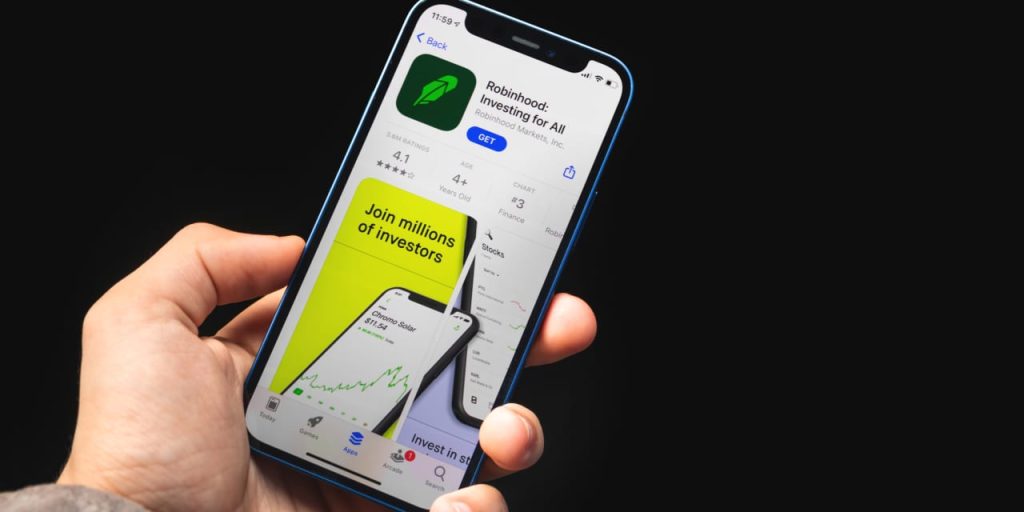Robinhood Markets shares dropped after it missed Wall Street’s third-quarter revenue expectations, as transaction revenue and monthly active users both slowed.
Robinhood (ticker: HOOD) said total net revenue for the quarter rose 29% from the same time last year to $467 million, primarily because of higher net interest and other revenue. Analysts expected revenue of $480 million.
The digital brokerage reported a third-quarter net loss of 9 cents a share, which was better than the 10 cent a share loss forecast by analysts.
Transaction revenue fell 11%, to $185 million. That includes a 13% drop in equities transaction revenue and a 55% drop in crypto revenue.
Robinhood’s
platform helped fuel a meme-stock craze during the Covid-19 pandemic, when retail investors flocked to its commission-free platform, and monthly active users soared to a peak of more than 21 million by the second quarter of 2021.
On Tuesday, it said monthly active users fell 16% from the same time last year, to 10.3 million. Wall Street expected 10.7 monthly active users at the end of the third quarter.
“It’s been nearly 10 years since we founded Robinhood and we’re just getting started,” said CEO and co-founder Vlad Tenev, in a statement. “Looking ahead, we remain focused on providing industry-leading products that serve far more of customers’ financial needs, gaining market share, expanding internationally, and continuing to change the industry for the better.”
The company said its Robinhood Retirement has grown to nearly 400,000 accounts and assets of more than $1 billion less than one year after launch. Its premium trading Robinhood Gold subscriptions increased to more than 1.3 million in the quarter, and the number of stocks and exchange-traded funds available on its 24-Hour Market has increased to 95.
Robinhood said it would soon start brokerage operations in the U.K., and will begin crypto trading in the European Union after that. “We are continuing work to build futures trading, aiming to bring the intuitive mobile experience that customers know from Robinhood to the industry,” the company said.
In September, Robinhood said in a filing that it had bought back more than 55 million shares of its stock from a company once owned by Sam Bankman-Fried, for about $605 million through a share purchase agreement with the U.S. Marshall Service.
In June, Robinhood said it was cutting about 7% of its full-time staff, or about 150 employees. It was the company’s third round of layoffs in just over a year.
The latest job cuts took place less than a week after Robinhood announced a $95 million deal to acquire credit-card start-up X1, which offers a no-fee credit card.
For the full year, Robinhood forecasts total operating expenses will be in the range of about $2.4 billion, updated from its prior outlook of $2.3 billion to $2.4 billion.
Robinhood’s shares are up more than 19% this year, but fell 8.5% in after-hours trading on Tuesday.
Write to Janet H. Cho at [email protected]
Read the full article here





